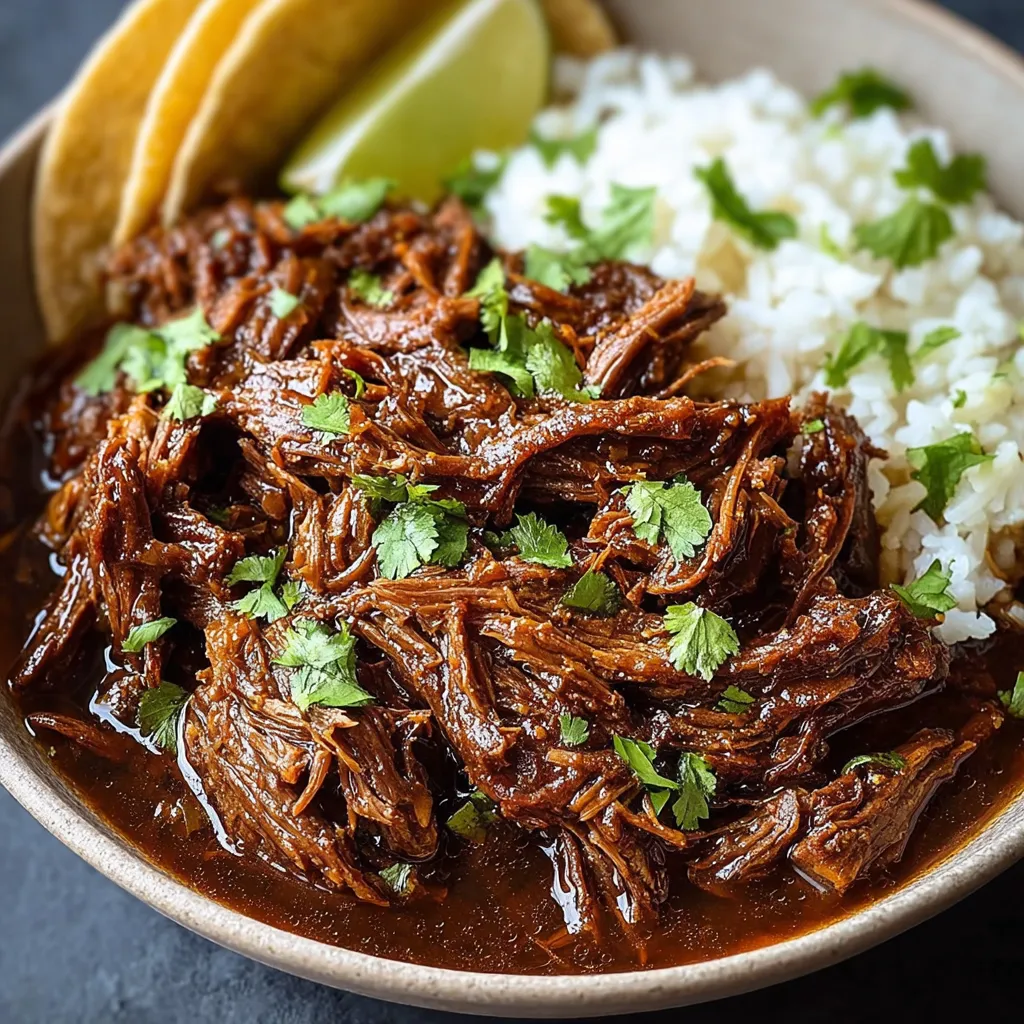The Alchemist’s Secrets: Vegetable Beef Soup Demystified
 The magic of a truly great vegetable beef soup lies in understanding the science of flavor development. It’s more than just throwing ingredients into a pot; it’s about coaxing out the maximum potential from each component through specific techniques and timings.
First, consider the Maillard reaction. This non-enzymatic browning reaction occurs between amino acids and reducing sugars, creating hundreds of complex flavor compounds. It’s what gives seared meat its savory crust and roasted vegetables their nutty sweetness. Applying high heat to the beef at the beginning is crucial for initiating this reaction. Don’t overcrowd the pan, as this will lower the temperature and prevent proper browning.
Next, understand the role of layering flavors. Aromatics like onions, garlic, and celery form the base of the soup’s flavor profile. Sautéing them in the rendered beef fat not only softens them but also releases their essential oils, which infuse the entire soup with their characteristic aroma. Deglazing the pot with a liquid like red wine or beef broth after browning the beef helps to lift any browned bits (fond) from the bottom, adding another layer of depth.
Finally, consider the texture. Overcooked vegetables become mushy and lose their individual flavors. Adding them in stages, according to their cooking time, ensures they remain slightly firm and retain their distinct character. Acids, such as tomatoes or a splash of vinegar, can brighten the flavors and prevent the vegetables from becoming overly sweet. Understanding these principles is the key to transforming a basic vegetable beef soup into something truly exceptional.
The magic of a truly great vegetable beef soup lies in understanding the science of flavor development. It’s more than just throwing ingredients into a pot; it’s about coaxing out the maximum potential from each component through specific techniques and timings.
First, consider the Maillard reaction. This non-enzymatic browning reaction occurs between amino acids and reducing sugars, creating hundreds of complex flavor compounds. It’s what gives seared meat its savory crust and roasted vegetables their nutty sweetness. Applying high heat to the beef at the beginning is crucial for initiating this reaction. Don’t overcrowd the pan, as this will lower the temperature and prevent proper browning.
Next, understand the role of layering flavors. Aromatics like onions, garlic, and celery form the base of the soup’s flavor profile. Sautéing them in the rendered beef fat not only softens them but also releases their essential oils, which infuse the entire soup with their characteristic aroma. Deglazing the pot with a liquid like red wine or beef broth after browning the beef helps to lift any browned bits (fond) from the bottom, adding another layer of depth.
Finally, consider the texture. Overcooked vegetables become mushy and lose their individual flavors. Adding them in stages, according to their cooking time, ensures they remain slightly firm and retain their distinct character. Acids, such as tomatoes or a splash of vinegar, can brighten the flavors and prevent the vegetables from becoming overly sweet. Understanding these principles is the key to transforming a basic vegetable beef soup into something truly exceptional.
The Quintessential Vegetable Beef Soup Recipe
This recipe is the culmination of numerous experiments and adjustments, designed to deliver the most flavorful and satisfying vegetable beef soup possible.Ingredients:
- 1.5 lbs beef chuck, cut into 1-inch cubes
- 2 tablespoons olive oil
- 1 large onion, chopped
- 2 carrots, peeled and chopped
- 2 celery stalks, chopped
- 3 cloves garlic, minced
- 8 cups beef broth
- 1 (28 ounce) can crushed tomatoes
- 1 teaspoon dried thyme
- 1 teaspoon dried oregano
- 1/2 teaspoon smoked paprika
- 1 bay leaf
- 1 cup frozen corn
- 1 cup frozen green beans
- 1 cup diced potatoes (russet or Yukon gold)
- 1/2 cup frozen peas
- Salt and pepper to taste
- Fresh parsley, chopped (for garnish)
Instructions:
- Sear the Beef: Heat olive oil in a large Dutch oven or pot over medium-high heat. Season beef cubes with salt and pepper. Sear the beef in batches, ensuring not to overcrowd the pot, until browned on all sides. Remove beef from the pot and set aside.
- Sauté Aromatics: Add onion, carrots, and celery to the pot and sauté until softened, about 5-7 minutes. Add garlic and cook for another minute until fragrant.
- Deglaze and Simmer: Pour in a splash of beef broth to deglaze the pot, scraping up any browned bits from the bottom. Add the crushed tomatoes, beef broth, thyme, oregano, smoked paprika, and bay leaf. Bring to a simmer.
- Combine and Cook: Return the seared beef to the pot. Reduce heat to low, cover, and simmer for at least 1.5-2 hours, or until the beef is very tender.
- Add Vegetables: Add potatoes and cook for 15 minutes. Then, add the frozen corn, green beans and peas. Cook until the vegetables are tender, about 10-15 minutes more.
- Season and Serve: Remove the bay leaf. Season with salt and pepper to taste. Garnish with fresh parsley before serving.
My Vegetable Beef Soup Odyssey
My journey to perfecting vegetable beef soup was not a straight line. It was filled with missteps, revelations, and a healthy dose of culinary frustration. Like many of you, I initially thought it was as simple as tossing everything into a pot and letting it simmer. My first few attempts were a disaster – bland, watery, and with vegetables that were either mushy or undercooked.The Bland Beginning
My initial attempts focused solely on convenience. I threw everything into a slow cooker and let it go all day. The result? Vegetables that resembled baby food and beef that, while tender, lacked any real depth of flavor. There was no *oomph*. It tasted like something was missing, and I couldn’t quite put my finger on it.The Browning Breakthrough
Then, I had an “Aha!” moment while researching the Maillard reaction for another project. The idea of searing the beef before adding it to the soup seemed like a game changer. And it was! Browning the beef added a richness and complexity that I had never achieved before. It created a foundation of flavor that permeated the entire soup. I even experimented with different cuts of beef, finally settling on chuck for its balance of flavor and tenderness when slow-cooked. I started to appreciate the importance of this step.The Veggie Balancing Act
Next, I tackled the texture problem. My initial approach of adding all the vegetables at once resulted in some being overcooked while others were undercooked. I realized that timing was key. Adding the vegetables in stages, based on their cooking time, allowed each vegetable to retain its individual texture and flavor. Potatoes first, then the heartier vegetables like carrots, and finally the quick-cooking frozen vegetables like peas and corn. This was a revelation! And I discovered that using frozen vegetables can actually be superior to fresh in some cases, as they are often flash-frozen at their peak ripeness. I started comparing this soup to my Lasagna Soup recipe, where timing also plays a crucial role in layering flavors.The Umami Upgrade
Finally, I experimented with adding umami-rich ingredients to further enhance the flavor. A splash of soy sauce or Worcestershire sauce added a subtle depth that elevated the soup to another level. Smoked paprika provided a gentle smokiness that complemented the beef. I even tried a small amount of tomato paste, caramelized with the onions and carrots, to add richness and acidity. The combination of these small additions made a significant difference. It reminded me of the techniques I use when making Meatloaf Mash, where careful seasoning is essential. And it was crucial to remember the other components of my meals, like the Cabbage Beef Bake and Hearty Farmhouse Hamburger & Potato Bake.The Foolproof Formula: Mastering Vegetable Beef Soup
Based on my experiments, I’ve distilled the process down to a few key steps that will guarantee success every time.- Brown the Beef: Sear the beef in batches to develop a rich, deep flavor. Don’t overcrowd the pot!
- Layer the Aromatics: Sauté onions, carrots, and celery in the rendered beef fat to create a flavorful base.
- Deglaze the Pot: Use beef broth to scrape up any browned bits from the bottom, adding another layer of flavor.
- Simmer Low and Slow: Allow the beef to simmer for at least 1.5-2 hours, or until it’s incredibly tender. This is the key to a melt-in-your-mouth texture.
- Add Vegetables in Stages: Add vegetables according to their cooking time, ensuring they retain their individual texture and flavor.
- Season Generously: Don’t be afraid to experiment with different herbs, spices, and umami-rich ingredients to create a flavor profile you love.
- Taste and Adjust: Taste the soup frequently throughout the cooking process and adjust the seasoning as needed. A little salt and pepper can make a big difference.
- Garnish with Fresh Herbs: A sprinkle of fresh parsley adds a burst of freshness and visual appeal.
Why is it important to sear the beef before adding it to the soup?
Searing the beef creates a rich, deep flavor due to the Maillard reaction, which adds complexity to the overall taste of the soup.
Why are the vegetables added in stages instead of all at once?
Adding vegetables in stages, according to their cooking time, ensures they retain their individual texture and flavor, preventing some from becoming mushy while others remain undercooked.
What is the Maillard reaction, and why is it important for vegetable beef soup?
The Maillard reaction is a non-enzymatic browning reaction that occurs between amino acids and reducing sugars, creating complex flavor compounds. It’s important because it gives seared meat its savory crust and roasted vegetables their nutty sweetness, adding depth of flavor to the soup.
How long should I simmer the beef for the best results?
Simmer the beef for at least 1.5-2 hours, or until it’s incredibly tender. This low and slow simmering is key to achieving a melt-in-your-mouth texture.

Best Vegetable Beef Soup
Ingredients
Equipment
Method
- Heat olive oil in a large Dutch oven or pot over medium-high heat. Season beef cubes with salt and pepper.
- Sear the beef in batches, ensuring not to overcrowd the pot, until browned on all sides. Remove beef from the pot and set aside.
- Add onion, carrots, and celery to the pot and sauté until softened, about 5-7 minutes. Add garlic and cook for another minute until fragrant.
- Pour in a splash of beef broth to deglaze the pot, scraping up any browned bits from the bottom. Add the crushed tomatoes, beef broth, thyme, oregano, smoked paprika, and bay leaf. Bring to a simmer.
- Return the seared beef to the pot. Reduce heat to low, cover, and simmer for at least 1.5-2 hours, or until the beef is very tender.
- Add potatoes and cook for 15 minutes. Then, add the frozen corn, green beans and peas. Cook until the vegetables are tender, about 10-15 minutes more.
- Remove the bay leaf. Season with salt and pepper to taste.
- Garnish with fresh parsley before serving.




